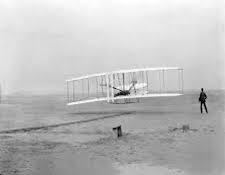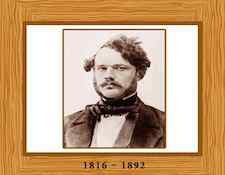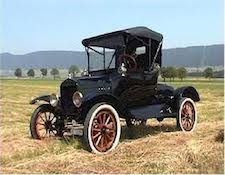It’s the time of year for saving money!
In 1903, The Wright Brothers successfully launched the first heavier than air flying machine. Despite this revolutionary achievement, the basic principals of how an airplane flies remain unchanged. Sixty six years later, man walked on the moon – in and of itself a notable achievement made possible by a significant advancement of technology, and rethinking design based on a different engineering goal.
 When we look around our lives we are able to find scores of everyday things that have seen notable advancement. Early automobiles could only manage about twenty miles an hour. Today, they easily exceed one hundred and race cars over two hundred. We’ve progressed from the abacus, to the slide rule to the computer. All three perform similar operations but each one is capable of increasingly complex tasks. Time and technology move inexorably forward. Or do they?
When we look around our lives we are able to find scores of everyday things that have seen notable advancement. Early automobiles could only manage about twenty miles an hour. Today, they easily exceed one hundred and race cars over two hundred. We’ve progressed from the abacus, to the slide rule to the computer. All three perform similar operations but each one is capable of increasingly complex tasks. Time and technology move inexorably forward. Or do they?
Many turn of the century audio technologies are still used today, albeit with dramatic improvements. If you love the sound of tubed audio equipment you certainly know it’s origins may be traced back to the early 1900’s. Transistors, by comparison, are only as recent as the 1950’s and not widely popularized until the early 1960’s. Yet look what an invention the transistor was and how it forever changed the world.
The concept of a dynamic speaker dates back to 1877 when Ernst W. Siemens was awarded a patent for the moving coil speaker. While the capability to reproduce sound has obviously progressed – no one will argue that today’s speaker systems sound better than those made in the late 1800’s – the operating principals essentially have not. We’ve obviously improved manufacturing methods and materials, like neodymium magnets in speakers, but the dynamic speaker’s how’s and why’s remain essentially the same. Laws of physics are just as constant for audio as aircraft.
 There are, of course differing technologies available. In audiophile parlance we have amplifier designs like Class A, Class A/B, Class D and SET. We have dynamic and electrostatic speakers, planar speakers and combinations of various technologies. All of these components represent forward thinking and a different approach. They all have certain attributes and drawbacks and offer the audio hobbyist a choice based on personal preference.
There are, of course differing technologies available. In audiophile parlance we have amplifier designs like Class A, Class A/B, Class D and SET. We have dynamic and electrostatic speakers, planar speakers and combinations of various technologies. All of these components represent forward thinking and a different approach. They all have certain attributes and drawbacks and offer the audio hobbyist a choice based on personal preference.
What has been accomplished to this point is to improve and refine existing technologies. We have designers whose diligent efforts towards improvements serve to make legacy designs better. This is a cause to be absolutely championed because all audiophiles welcome better sound. It is easy to hear differences in systems with wide ranging costs, different types of components, set up and any number of variables. All of this variety is available because someone looked for a different or better way.
So what is the next logical step? What will be the next big thing to come along?
Some have as a utopic goal sound reproduction to rival live music. While not realistically feasible, at least for now, it is nevertheless a worthy goal. A more realistic one is the equivalence of reproduced sound to the studio master. In fact, that goal is a lot closer than many might realize.
 Our hobby is one with a rich scientific heritage. Technology has changed for the better but with designs that are many years old. But is that condition really all that unusual? Today’s cars far exceed a Model T in every design parameter. Still, today’s cars are a combustion engine on a frame with a body on top. Same as a Model T. Yet to the average consumer a Model T and today’s automobiles could hardly be more different.
Our hobby is one with a rich scientific heritage. Technology has changed for the better but with designs that are many years old. But is that condition really all that unusual? Today’s cars far exceed a Model T in every design parameter. Still, today’s cars are a combustion engine on a frame with a body on top. Same as a Model T. Yet to the average consumer a Model T and today’s automobiles could hardly be more different.
As audiophiles, we look forward to the next big thing, like the next amp that utilizes a radically different design. Or perhaps a completely different type of speaker. For now, those designs remain unrealized. Who knows, maybe someone in a garage somewhere is perfecting that very design.
Until that day comes, we will just have to reconcile ourselves that what we have today is a remarkable progression of the past. We have at our current disposal the pinnacle of current day audio achievement. Whatever our sonic goals and no matter the budget, something may be found that meets almost all criteria.
We can thank people like Ernst Siemens or any of the other notable designers of our past who have laid so solid a foundation. We can also thank the engineers working today to enrich our hobby. While there are many debates, like for instance cost, it can hardly be argued that we have amazing components currently available.
Modern technology based on turn of the century designs has evolved in a predictable progression. In fact, it is pretty remarkable. If you don’t agree, look at audio’s history then give your system a serious listen. You’ll see.





